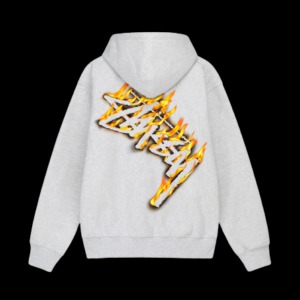Stüssy is more than just a streetwear brand; it’s a cultural phenomenon that has shaped the fashion landscape for decades. From its humble beginnings as a surf-centric label to becoming a global streetwear powerhouse, Stüssy’s influence is undeniable. This article delves into the brand’s history, its impact on fashion, and what makes Stüssy a lasting icon in an ever-evolving industry.
The Birth of Stüssy
Stüssy was founded in the early 1980s by Shawn Stussy, a surfer and designer from Laguna Beach, California. Originally, Shawn’s designs were an stüssy extension of his passion for surf culture. He began by handcrafting surfboards, which soon evolved into screen-printing his now-famous signature on T-shirts, caps, and other apparel. These items were initially sold out of the back of his car, embodying the grassroots nature of the brand.
The brand quickly gained popularity within the surf community, but its appeal didn’t stop there. Stüssy’s designs, heavily influenced by the laid-back, rebellious spirit of the surfing world, resonated with a broader audience. By blending surf culture with elements of punk, hip-hop, and skate culture, Shawn Stussy created something unique that would transcend the boundaries of traditional surfwear.
Growth and Expansion
As Stüssy’s popularity grew, so did its influence. By the mid-1980s, the brand had expanded beyond the beaches of California and began making waves in the fashion world. Stüssy started collaborating with other brands and artists, further cementing its place in the burgeoning streetwear scene. These collaborations, often with unexpected partners, showcased the brand’s versatility and its ability to stay ahead of fashion trends.
The 1990s marked a period of significant growth for Stüssy. The brand began to dominate the streetwear market, with its iconic logo becoming a symbol of cool, urban fashion. This era saw Stüssy expanding its product range, introducing everything from outerwear to accessories, all while maintaining the brand’s distinctive aesthetic.
The Stüssy Tribe
One of the key elements that set Stüssy apart from other brands was the creation of the “Stüssy Tribe.” This group, originally made up of Shawn Stussy’s close friends, was more than just a marketing gimmick—it was a community. The Stüssy Tribe embodied the brand’s ethos of inclusivity and creativity, bringing together like-minded individuals from different walks of life who shared a passion for music, art, and fashion.
The Stüssy Tribe played a crucial role in spreading the brand’s influence globally. Members of the tribe, including influential DJs, artists, and musicians, helped to introduce Stüssy to new audiences, making it a cornerstone of the global streetwear culture. The sense of belonging that the tribe fostered resonated with fans worldwide, further cementing Stüssy’s status as a cultural icon.
Stüssy’s Design Aesthetic
Stüssy’s design aesthetic is a seamless blend of various cultural influences. From its early days, the brand drew inspiration from surf culture, but it also incorporated elements from punk, hip-hop, and skateboarding. This eclectic mix resulted in a unique style that was both laid-back and edgy.
Over the years, Stüssy has produced numerous iconic pieces, including graphic tees, bucket hats, and varsity jackets. The brand’s logo, often simply referred to as “the Stüssy logo,” is one of the most recognizable in streetwear. The logo’s hand-drawn, graffiti-like script became a symbol of authenticity and rebellion, resonating with a generation of youth who sought to break away from the mainstream.
As the brand evolved, so did its designs. Stüssy began experimenting with different fabrics, cuts, and styles, reflecting the changing tastes of its audience. However, the brand has always stayed true to its roots, maintaining a consistent design language that blends comfort with a distinctive streetwear edge.
Global Influence of Stüssy
Stüssy’s influence extends far beyond its California roots. The brand was one of the first to take streetwear global, opening flagship stores in major cities around the world, including Tokyo, London, and New York. Each of these locations quickly became hubs for local streetwear enthusiasts, helping to spread Stüssy’s influence across different cultures.
In Japan, for example, Stüssy’s impact on fashion has been particularly profound. The brand’s blend of American and Japanese streetwear elements helped to shape the country’s unique fashion scene. Stüssy’s ability to adapt its designs to different cultural contexts while maintaining its core identity has been key to its global success.
Collaborations and Partnerships
Collaborations have always been a vital part of Stüssy’s strategy. The brand has partnered with a wide range of companies, from luxury fashion houses to sportswear giants, creating limited-edition collections that generate massive buzz in the fashion world. These collaborations have not only kept Stüssy at the forefront of the industry but have also introduced the brand to new audiences.
Some of the most notable collaborations include partnerships with Nike, Dior, and Comme des Garçons. These collaborations often result in highly sought-after pieces that command high prices on the resale market. The success of these partnerships has also influenced the broader fashion industry, where collaborations between streetwear brands and high-fashion labels have become increasingly common.
Stüssy in Pop Culture
Stüssy’s presence in pop culture is undeniable. The brand has been worn by countless celebrities, musicians, and artists, further solidifying its status as a cultural icon. From hip-hop legends like A Tribe Called Quest to modern-day influencers, Stüssy’s influence can be seen across various creative fields.
The brand’s association with music is particularly strong. In the 1990s, Stüssy became closely linked with the burgeoning hip-hop scene, with artists frequently sporting the brand in music videos and on stage. This connection helped to propel Stüssy into the mainstream, where it became synonymous with the rebellious, countercultural spirit of the time.
